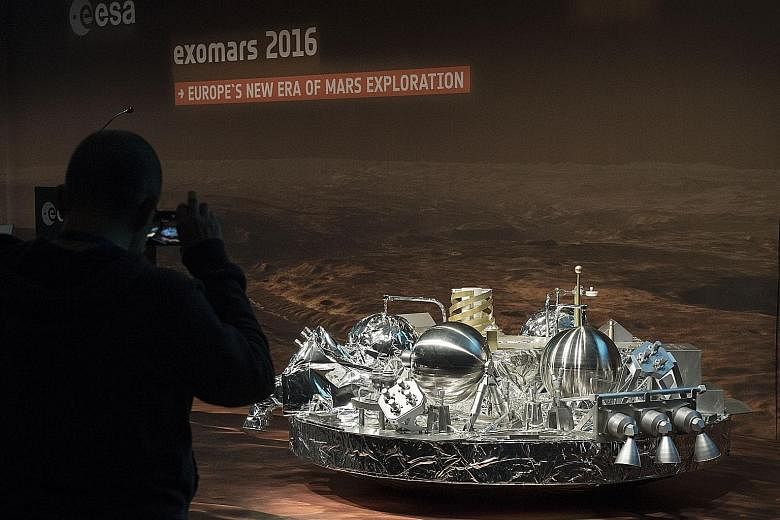PARIS • Europe hoped to land a tiny craft on Mars yesterday, a key step in its joint ExoMars project with Russia to search for life on the Red Planet.
ExoMars gets its name from "exobiology" - the science of analysing the odds and likely nature of life on other planets.
Schiaparelli, the ExoMars test lander, was named after a late 19th- century Italian astronomer Giovanni Schiaparelli, who had observed straight lines, which he called "canali", on Mars through a telescope.
Many imagined these were vast networks of irrigation canals built by intelligent creatures - a notion that influenced H.G. Wells to write the early sci-fi classic, The War Of The Worlds, about Martians attacking Earth. Better telescopes in the 20th century killed off that legend.
The ExoMars Trace Gas Orbiter (TGO) spacecraft, which will analyse the Martian atmosphere, measures 3.5m by 2m by 2m. It has solar wings spanning 17.5m, tip to tip.
With the Schiaparelli lander on board, it travelled 496 million km to get to Mars.
On Sunday, the TGO released Schiaparelli from a distance of 1 million km from the Red Planet's surface.
The lander, which is 1.6m wide, will test entry and landing gear for a subsequent six-wheeled rover to be launched in 2020.
Scientists believe Mars once hosted liquid water - a key ingredient for life as we know it.
While the Martian surface is too dry, cold and radiation-blasted to sustain life today, this may have been a different story 31/2 billion years ago when the Red Planet's climate was warmer and wetter.
Science has long abandoned the hunt for little green men, though. Life, if any exists, is likely underground - away from harmful ultraviolet and cosmic rays - and in the form of single-celled microbes.
Primitive or not, it would be the first time humans ever observe life on a planet other than Earth.
The mission will also seek to learn more about geological processes on Mars, and about the sand storms that change the face of the planet with their seasonal violence.
AGENCE FRANCE-PRESSE

